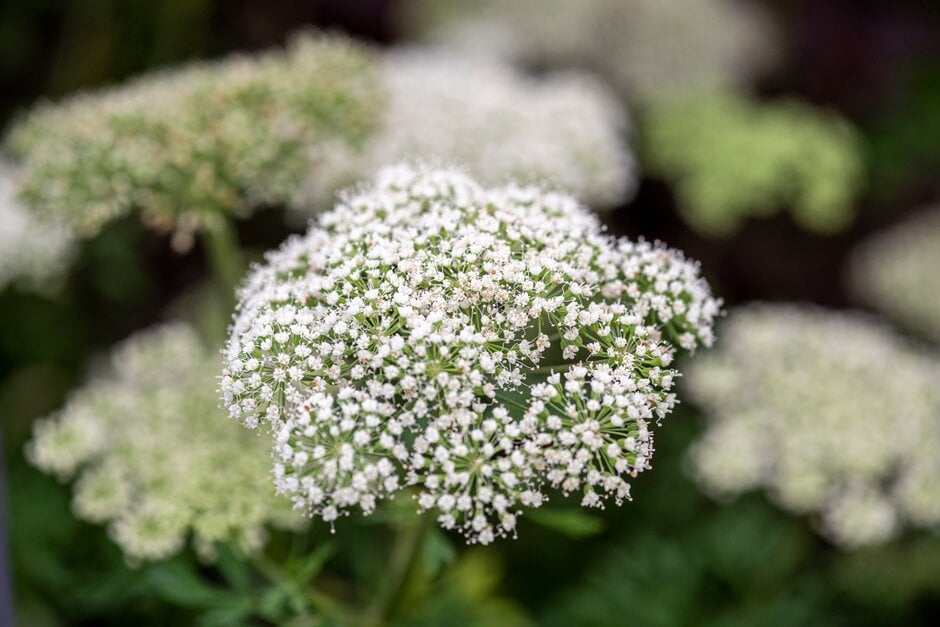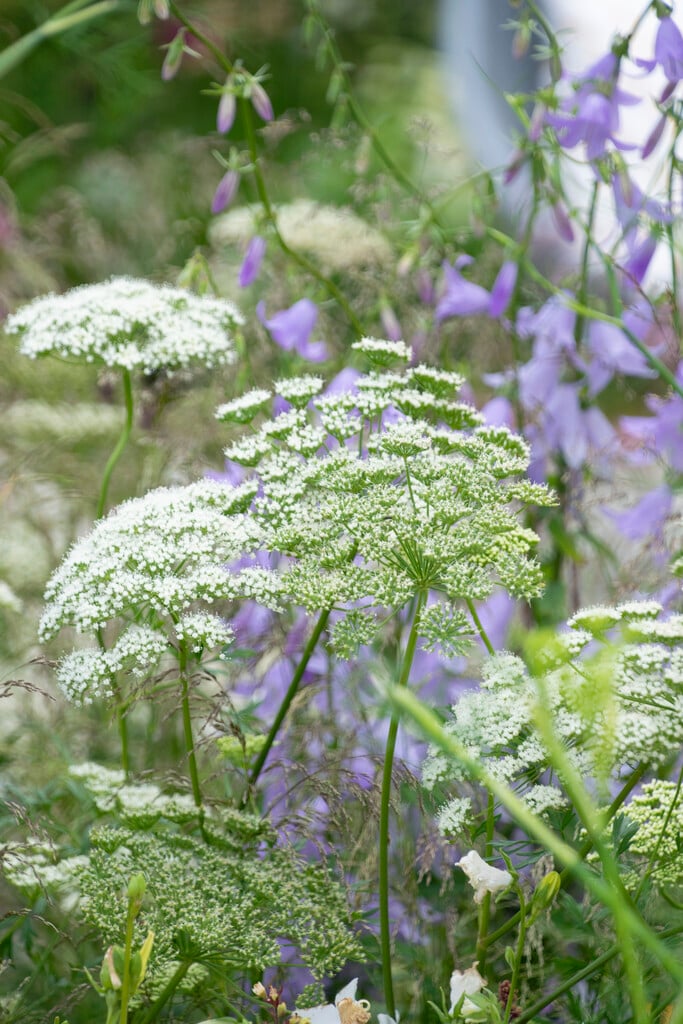Cenolophium denudatum
Baltic parsley
A fast-growing, semi-evergreen, clump-forming perennial reaching a height of around 150cm, with very finely divided dark green foliage. Purple stems above the foliage hold masses of flat umbels of greenish-white flowers in June and July
Size
Ultimate height
1–1.5 metresTime to ultimate height
2–5 yearsUltimate spread
0.1–0.5 metresGrowing conditions
Moisture
Moist but well–drainedpH
Acid, Alkaline, NeutralColour & scent
| Stem | Flower | Foliage | Fruit | |
| Spring | Purple | Green | ||
|---|---|---|---|---|
| Summer | Purple | Green White | Green | |
| Autumn | Purple | Green | ||
| Winter | Green |
Position
- Full sun
- Partial shade
Aspect
South–facing or East–facing or West–facing
Exposure
Exposed or Sheltered Hardiness
H6Botanical details
- Family
- Apiaceae
- Native to GB / Ireland
- No
- Foliage
- Semi evergreen
- Habit
- Bushy
- Genus
Cenolophium are deciduous perennials with finely divided, triangular leaves and domed, compound umbels of many small white flowers
- Name status
Correct
- Plant range
- Europe, Asia
How to grow
Cultivation
Grow in any moist, but well-drained soil in sun or partial shade
Propagation
Propagate by seed sown in containers in a cold frame in autumn or spring. Can also be propagated by root cuttings in mid-winter
Suggested planting locations and garden types
- Cottage and informal garden
- Prairie planting
- Wildlife gardens
- City and courtyard gardens
- Gravel garden
- Mediterranean climate plants
- Cut flowers
- Flower borders and beds
Pruning
No pruning required. Cut back foliage at the end of the season
Pests
Generally pest-free
Diseases
Generally disease-free
Love gardening
Sign up to receive regular gardening tips, inspiration, offers and more
View our Privacy Policy
Get involved
The Royal Horticultural Society is the UK’s leading gardening charity. We aim to enrich everyone’s life through plants, and make the UK a greener and more beautiful place.

